This is my first report, so here goes. The brake van tour is the only way to see the whole site, it’s just too big. You do get to see the whole site, so is a good reccy for a return journey on foot. To give you some idea of scale, the bloom billet mill is 0.8 miles long, the whole site covers 12 square miles, contains 70+ miles of road, and 120+ miles of railway.
A brief history of the site. In the Doomsday Book, there is a mention of a forge at Stowe, and there’s archaeological evidence that iron ore had been mined in the area, prior to the (re)discovery of it by Roland Winn in 1859. A narrow gauge railway was built in 1861 connecting the ironstone quarries to Gunness on the banks of the river Trent. Roland Winn was also instrumental in getting the railway companies to invest in a standard gauge railway that connected Scunthorpe to the network. This was completed in 1866.
In 1864 the first blast furnace opened, and by the late 1870s had grown to 13 blast furnaces, with more on the way.
By the early 20th century there were 3 main companies operating on the site: The Appleby-Frodingham steel company, Redbourn ironworks, and, John Lysaghts.
By the early 60s it became apparent that the Scunthorpe plant would need massive investment to take advantage of new technology available for steelmaking, to keep the plant competitive. The ANCHOR project was born to turn Scunthorpe into ‘The most advanced steelmaking plant in Europe.’ This was completed by 1973 at a total cost of 225 million pounds. (2.5 billion today). And took the plants capacity to 4.5 million tonnes of steel annually.
In 1967 all three companies became part of BSC under nationalisation.
In 1988 British Steel was privatised under the Thatcher government.
In 1999 British Steel merged with Hoogovens of Holland to form Corus.
In 2007 Corus was bought out by Tata steel.
After operating at a loss, in 2016 the plant was sold to Greybull Capital for 1 pound and the British Steel brand is ressurected.
In 2017 the plant returned to profit.
I could have got more pics of other plant, but the battery ran out. Enjoy!

Coke ovens being discharged

Empty torpedo ladle

The blast furnaces

Blast furnaces and sinter plant

Long shot of plant with blast furnaces to the left

Spare rolls for the finishing mills

Down the side of the bloom billet mill

Freshly made bars waiting for further processing

BOS and concast plant

Entrance to concast

BOS and concast

Storage silos and chimneys for the blast furnaces

Molten iron being poured into torpedo ladles

Leaving blast plant
A brief history of the site. In the Doomsday Book, there is a mention of a forge at Stowe, and there’s archaeological evidence that iron ore had been mined in the area, prior to the (re)discovery of it by Roland Winn in 1859. A narrow gauge railway was built in 1861 connecting the ironstone quarries to Gunness on the banks of the river Trent. Roland Winn was also instrumental in getting the railway companies to invest in a standard gauge railway that connected Scunthorpe to the network. This was completed in 1866.
In 1864 the first blast furnace opened, and by the late 1870s had grown to 13 blast furnaces, with more on the way.
By the early 20th century there were 3 main companies operating on the site: The Appleby-Frodingham steel company, Redbourn ironworks, and, John Lysaghts.
By the early 60s it became apparent that the Scunthorpe plant would need massive investment to take advantage of new technology available for steelmaking, to keep the plant competitive. The ANCHOR project was born to turn Scunthorpe into ‘The most advanced steelmaking plant in Europe.’ This was completed by 1973 at a total cost of 225 million pounds. (2.5 billion today). And took the plants capacity to 4.5 million tonnes of steel annually.
In 1967 all three companies became part of BSC under nationalisation.
In 1988 British Steel was privatised under the Thatcher government.
In 1999 British Steel merged with Hoogovens of Holland to form Corus.
In 2007 Corus was bought out by Tata steel.
After operating at a loss, in 2016 the plant was sold to Greybull Capital for 1 pound and the British Steel brand is ressurected.
In 2017 the plant returned to profit.
I could have got more pics of other plant, but the battery ran out. Enjoy!

Coke ovens being discharged
Empty torpedo ladle
The blast furnaces
Blast furnaces and sinter plant
Long shot of plant with blast furnaces to the left
Spare rolls for the finishing mills
Down the side of the bloom billet mill
Freshly made bars waiting for further processing
BOS and concast plant
Entrance to concast
BOS and concast
Storage silos and chimneys for the blast furnaces
Molten iron being poured into torpedo ladles
Leaving blast plant
Attachments
-
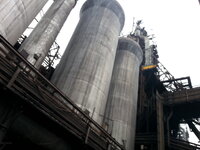 20170610_173027.jpg99.6 KB · Views: 77
20170610_173027.jpg99.6 KB · Views: 77 -
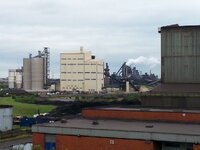 20170610_173657.jpg102.9 KB · Views: 59
20170610_173657.jpg102.9 KB · Views: 59 -
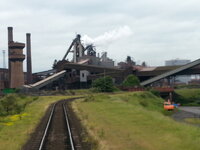 20170610_172114.jpg82.5 KB · Views: 40
20170610_172114.jpg82.5 KB · Views: 40 -
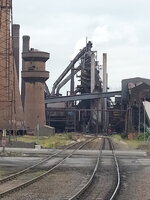 20170610_172432.jpg126.4 KB · Views: 60
20170610_172432.jpg126.4 KB · Views: 60 -
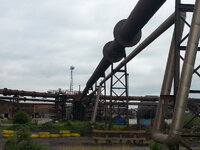 20170610_171544.jpg115.2 KB · Views: 58
20170610_171544.jpg115.2 KB · Views: 58 -
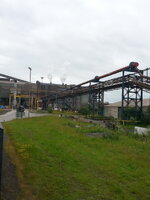 20170610_171229.jpg122.4 KB · Views: 50
20170610_171229.jpg122.4 KB · Views: 50 -
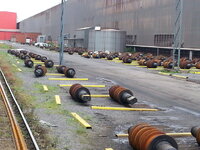 20170610_170732.jpg169 KB · Views: 50
20170610_170732.jpg169 KB · Views: 50 -
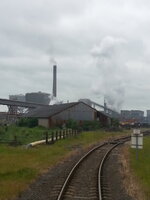 20170610_164910.jpg85.6 KB · Views: 65
20170610_164910.jpg85.6 KB · Views: 65 -
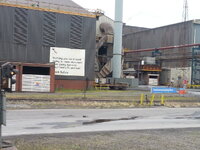 20170610_171317.jpg165 KB · Views: 52
20170610_171317.jpg165 KB · Views: 52 -
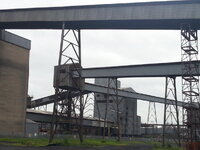 20170610_165101.jpg113 KB · Views: 48
20170610_165101.jpg113 KB · Views: 48 -
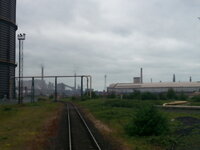 20170610_165025.jpg66.6 KB · Views: 56
20170610_165025.jpg66.6 KB · Views: 56 -
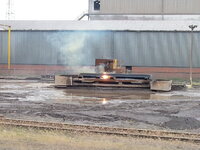 20170610_171627.jpg149.9 KB · Views: 47
20170610_171627.jpg149.9 KB · Views: 47
Last edited:
